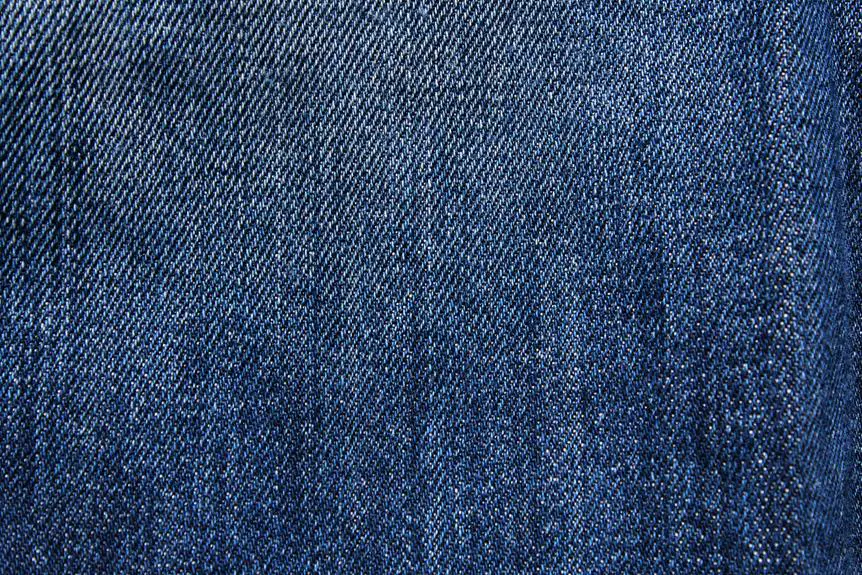When you're aiming for that perfect stonewash effect, it's crucial to start with the right materials and techniques. You've got to select high-quality fabrics, like denim or cotton blends, that can withstand the process. As you prepare your garment, consider the type of pumice stones you'll use and how they'll interact with your fabric during the wash. But there's more to it than just choosing the right stones and fabrics—understanding the timing and washing conditions is essential to achieve a truly authentic look. Curious about the steps to perfect this technique?
Table of Contents
Key Takeaways
- Choose sturdy fabrics like denim or cotton blends for better durability and fade effects during stonewashing.
- Use pumice stones in a gentle wash cycle to achieve a soft, weathered appearance without damaging the fabric.
- Maintain optimal washing conditions with cold water and low pH detergents to preserve color and fabric integrity.
- Test a small fabric area before full washing to ensure desired results and prevent any unwanted damage.
Understanding the Stonewash Technique
The stonewash technique involves washing fabric with stones to create a weathered, vintage look that many people love. This process not only softens the material but also gives it a unique, distressed appearance that's perfect for casual wear. When you use this technique, the stones tumble against the fabric, breaking down the fibers and adding character through fading and fraying.
To achieve the best results, you'll typically want to use larger stones that can create more significant abrasion. You might also consider the size and weight of the stones, as they can affect the intensity of the wash. The duration of the wash cycle is crucial too; longer cycles can produce a more pronounced stonewash effect.
Don't forget the water temperature! Warmer water can help the dye loosen, allowing for that coveted faded look. It's a balance between achieving the right softness and maintaining the fabric's strength, so keep an eye on your material throughout the process.
Choosing the Right Fabric
When you're choosing the right fabric for a stonewash effect, consider the type of fabric you'll be working with.
You'll want to think about how well the color retains after washing and how durable the material is for long-lasting wear.
Each of these factors plays a crucial role in achieving that perfect look.
Fabric Types Overview
Choosing the right fabric is crucial for achieving that sought-after stonewash effect, as it directly influences the final look and feel of your garment.
When you're selecting the ideal fabric, consider the following options that work exceptionally well with the stonewash technique:
- Denim: This is the classic choice for stonewashing. Its sturdy fibers hold up beautifully during the wash process, resulting in that desired faded appearance.
- Cotton Blends: Fabrics that combine cotton with synthetic fibers can enhance durability while still allowing for a soft, worn-in feel. These blends often maintain their shape better after washing.
- Linen: If you're looking for a lighter, breezier option, linen can be a great choice. While it may not achieve the same depth of stonewashing as denim, it offers a unique texture and drape.
Color Retention Importance
Color retention plays a vital role in ensuring your stonewashed garment maintains its appeal over time, so selecting fabrics with good dye stability is essential. When you choose the right fabric, you're investing in the longevity of your stonewash effect.
Cotton blends, particularly those that include polyester, are known for their excellent color retention. They resist fading, allowing the unique stonewashed look to shine through longer.
Additionally, consider fabrics that have been pre-treated or dyed using high-quality methods. These processes enhance the fabric's ability to hold onto color, ensuring that your garment remains vibrant even after multiple washes. Avoid fabrics that are prone to fading, such as lower-quality cotton or those with synthetic dyes that don't stand the test of time.
You should also think about the weight of the fabric; heavier materials often retain color better than lighter ones. This means that opting for a thicker fabric can help your stonewashed pieces maintain their visual appeal.
In short, when selecting fabrics, prioritize those with superior dye stability to ensure your stonewashed garments stay looking fresh and stylish for years to come.
Durability Considerations
To ensure your stonewashed garments stand the test of time, focus on selecting durable fabrics that can withstand regular wear and tear. The right fabric not only enhances the stonewashed effect but also guarantees longevity.
Here are three fabric options you should consider:
- Denim: This classic choice is a staple for stonewashing. Look for heavier-weight denim, as it's more resilient and less prone to fraying over time.
- Canvas: Known for its strength, canvas is another great option. It provides excellent durability and can develop a unique character with each wash, making it perfect for a stonewashed look.
- Cotton Blends: Fabrics that blend cotton with polyester or elastane offer the softness of cotton while enhancing durability and resistance to wrinkles. This combination keeps your stonewashed items looking fresh longer.
Preparing Your Garment
Before starting the stonewash process, you should thoroughly clean your garment to remove any dirt or residues. This step is crucial because any leftover grime can interfere with the stonewash effect, leading to uneven results. Use a gentle detergent and wash your garment in cold water to preserve its fibers.
Next, check the fabric composition. Different materials react differently during the stonewash process, so understanding your garment's makeup will help you anticipate any changes. If your garment has embellishments, consider removing them or protecting them to prevent damage during the wash.
Once your garment is clean and assessed, it's a good idea to test a small, inconspicuous area first. This way, you can see how the fabric behaves with the stonewash technique. If you're satisfied with the test, you can proceed with confidence.
Selecting Stonewashing Materials
When you're ready to create that perfect stonewash effect, selecting the right materials is crucial.
You'll want to consider the fabric types, washing agents, and the equipment you'll use.
Each choice impacts the final look and feel of your garment, so let's break it down.
Choosing Fabric Types
Selecting the right fabric is crucial for achieving that sought-after stonewash effect. Not all materials respond the same way to the stonewashing process, so you'll want to choose wisely.
Here are three fabric types that work best for this technique:
- Denim: This is the classic choice for stonewashing. The durability and weave of denim allow it to hold up well during the washing process, resulting in a beautifully worn look.
- Cotton Blends: Fabrics that blend cotton with polyester or spandex provide a softer feel while still maintaining strength. They can achieve a unique stonewash finish that's both stylish and comfortable.
- Canvas: If you're looking for something a bit different, canvas can also work well. It offers a rugged aesthetic and can develop a distinct texture, making it perfect for outerwear and accessories.
Essential Washing Agents
To achieve that perfect stonewash effect, you'll need to choose the right washing agents that enhance the fabric's texture while creating a soft, faded appearance.
Start with pumice stones, which are essential for their abrasive qualities; they help in softening the fabric while adding that signature worn look. You can also consider using enzymes specifically designed for denim; they break down cellulose fibers, giving your fabric a more lived-in feel.
Next, look into detergents that are low in pH, as they can effectively clean without damaging the fibers. Opt for biodegradable options to keep your process environmentally friendly. Additionally, fabric softeners can help achieve that ultra-soft touch, but be cautious not to overdo it, as too much can negate the stonewashed effect.
Lastly, don't forget about color additives if you want to enhance the faded look further. By selecting the right combination of these washing agents, you can create a stunning stonewash effect that elevates your fabric's aesthetic.
Experiment with different proportions to find what works best for your specific materials and desired outcome!
Equipment and Tools
How do you choose the right equipment and tools for achieving the perfect stonewash effect? Selecting the right materials is crucial, as they directly impact the texture and finish of your fabric.
Here are three essential items you'll need:
- Washing Machine: A front-loading machine is ideal for stonewashing. It allows for a more gentle, even wash, which helps in achieving that coveted worn look without damaging the fabric.
- Stones or Abrasives: Choose stone sizes that suit your fabric type. Smaller stones work well for lighter fabrics, while larger stones can help create a more distressed appearance on heavier textiles. You can also consider using synthetic abrasives for a more controlled effect.
- Detergents: Opt for mild, eco-friendly detergents that won't harm the fabric. These help in the stonewashing process while being gentle on your materials, ensuring longevity.
Step-by-Step Stonewashing Process
Begin by gathering your materials, including denim fabric, stones, and a washing machine. The right stones are crucial; they should be smooth and not too heavy. Start by loading your denim fabric into the washing machine. You'll want to ensure it's not packed too tightly, allowing the stones to circulate freely.
Next, add the stones to the drum, making sure you have a balanced load. The table below illustrates the steps and their purposes:
| Step | Purpose |
|---|---|
| Load denim | To prepare fabric for washing |
| Add stones | To create the stonewash effect |
| Set wash cycle | To agitate and distress fabric |
Now, set your washing machine to a gentle cycle with cold water. This helps prevent excessive wear on your fabric while still achieving that desired effect. After the wash cycle is complete, remove your denim and rinse it thoroughly to eliminate any residual stones. Hang it to dry, and you'll notice the beautiful, soft, and worn appearance that stonewashing provides. Enjoy your newly transformed denim!
Tips for Achieving the Best Results
For the best stonewash results, choosing the right stones and denim can make a significant difference in achieving that perfect worn look.
Start by selecting high-quality, durable denim that can withstand the washing process. Look for fabric with a bit of stretch; it'll help maintain shape while still achieving the desired softness.
Next, focus on the stones. The type and size of the stones you use can greatly impact the final effect. Here are three tips to keep in mind:
- Opt for Smaller Stones: Smaller stones create a more delicate wash effect, giving your denim a softer and more subtle look.
- Experiment with Different Materials: Try varying stone materials like pumice or volcanic stones to discover unique textures and fades.
- Control Washing Time: Pay close attention to the duration of the wash cycle. Too long can lead to excessive wear; too short mightn't achieve the desired effect.
Caring for Stonewashed Items
After achieving that perfect stonewash effect, it's important to know how to care for your stonewashed items to keep them looking great. Proper care not only preserves the unique look but also extends the life of your garments.
Here's a quick guide to help you maintain your stonewashed pieces:
| Care Tip | Description |
|---|---|
| Wash Separately | Always wash your stonewashed items separately to avoid color bleeding. |
| Cold Water | Use cold water to prevent fading and maintain the texture. |
| Gentle Cycle | Choose a gentle cycle on your washing machine to avoid wear and tear. |
| Air Dry | Air drying is ideal; avoid using a dryer to prevent shrinking or damage. |
| Avoid Bleach | Never use bleach or harsh chemicals, as they can ruin the stonewash effect. |
Frequently Asked Questions
Can You Stonewash Synthetic Fabrics Effectively?
You can't stonewash synthetic fabrics effectively like you can with natural fibers. The process requires specific materials and techniques that don't yield the same results on synthetics, often leading to less desirable outcomes.
How Does Stonewashing Affect Fabric Durability?
Stonewashing can weaken fabric durability due to the abrasive process. It breaks down fibers, making them softer but potentially less resilient. You'll notice a difference in wear over time, especially with repeated washing and use.
Is Stonewashing Safe for the Environment?
You might wonder if stonewashing's safe for the environment. While traditional methods can harm ecosystems, modern techniques often use eco-friendly processes. It's crucial to choose brands committed to sustainable practices to minimize environmental impact.
Can I Achieve Stonewash at Home Without Professional Equipment?
Yes, you can achieve stonewash at home without professional equipment. Just gather some rocks, a sturdy bag, and your fabric. Toss them together, shake it up, and let nature do its work. Have fun experimenting!
How Do Different Stones Affect the Stonewash Outcome?
Different stones can dramatically alter your stonewash outcome. Softer stones create a gentler fade, while harder stones produce a more distressed look. Experimenting with various stones helps you find the perfect balance for your desired effect.







